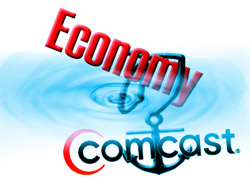Old Snake Oil in New Bottles: Ideological Attacks on Local Public Enterprises

We are engaged in a rare event - we are moving offices. The Institute for Local Self-Reliance pre-dates our initiative and has been in this location for over 20 years. During the packing and sorting, we have encountered a curious collection of treasures.
In keeping with this air of nostalgia, we want to present a report from 2001 by John Kelly, who was Director of Economics and Research at the American Public Power Association at the time he wrote the piece. The title caught our attention but the content kept our interest. We want to pass it on as recommended reading.
"Old Snake Oil in New Bottles: Ideological Attacks on Local Public Enterprises in the Telecommunications Industry" (PDF format) is a critique of a Progress and Freedom Foundation (PFF) report titled "Does Government belong in the Telecommunications Business?" (PDF) Kelly confirms that the arguments and fallacies advanced by the private telecommunications industry and its lobbyists have not changed in 11 years. The past 11 years have also seen the same slanted arguments and the same shaded research that, even after repeatedly being discredited, arise again and again.
The arguments truly are "snake oil." From the report:
One dictionary definition of "snake oil" describes it as "a liquid substance with no real medicinal value sold as a cure-all or nostrum...." This definition aptly describes the content of the PFF report. Its claims are not solid ones and can be easily refuted. Essentially, it views the elimination of government enterprises from the telecommunications industry as a cure-all, or nearly one, for the competitive problems that exist in the industry. This solution has no real value, and is counterproductive; it would exacerbate the problem of a lack of effective competition in the industry. The problem is a lack of effective competition, not public enterprises.



 The Customer Service Rep could not tell me the new account number. I asked if he could find it with several different pieces of unique information I did have and was told no. It was not possible.
Frustrated, I said, "screw it," and just plugged old Comcast modem into the network, wondering if it would magically work with the correct static IP. And Lo, we were back on the Internets.
The Customer Service Rep could not tell me the new account number. I asked if he could find it with several different pieces of unique information I did have and was told no. It was not possible.
Frustrated, I said, "screw it," and just plugged old Comcast modem into the network, wondering if it would magically work with the correct static IP. And Lo, we were back on the Internets.